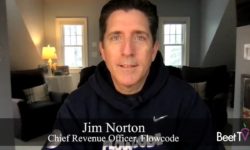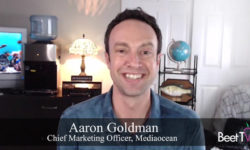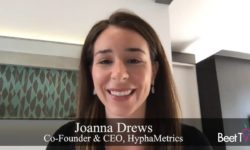VIA BEETCAM — Is coronavirus good or bad for advertisers and their publishers?
The thirst for information about the pandemic is widely seen as driving a flight of audience to trusted news sources.
So you may think that advertisers would be happy with the traffic boost.
But some ad buyers are unhappy with the nuance of the virus stories they are being placed against.
In response, Comscore has just launched an “epidemic brand safety filter”, a brand safety segment inside its activation suite, which lets ad buyers fine-tune the kind of virus content they do or don’t appear against.
According to Comscore’s announcement: “For example, if a brand was comfortable advertising alongside coronavirus educational content but not content (about) COVID-19-related tragedies, Comscore’s new capability enables this level of nuanced control. These segments also offer publishers the flexibility they need to help their advertisers navigate the evolving news cycle.”
Think of it as “social distancing” for ad buyers who don’t want to stand too close to virus content.
Content boom
In this video interview with Beet.TV, Rachel Gantz, General Manager, Activation Solutions at Comscore, explains the rationale.
“What we’ve seen, even in just the last week, is that 22% to 30% of all ad impressions are appearing in coronavirus content, which is just a huge number,” Gantz explains.
“And as a point of comparison, crime and violence, which is a pretty popular brand safety filter… during that same time period, we saw 2% to 5%.
“‘Pervasive’ is really the best word (for) coronavirus content and how that is creating some challenges for marketers and publishers.
“A couple of weeks ago, some of our clients came to us, asking us to help them figure out ways, from the advertiser side, to protect their brands from some of this unwanted negative content and, from the publisher side, to be able to offer that to their advertisers.
“So we’ve been pretty hard at work trying to solve that as quickly as we can.”
Balancing act
The launch could reignite the debate over what constitutes advertiser value in a news environment, and whether organizations are commercially incentivized to report bleak news.
Last year, Beet.TV produced a series, Why News in Today’s Marketplace, in which executives explored how to navigate what has become a charged, negative and sometimes partisan current-affairs landscape.
Vice Media revenue chief’s said brand safety blacklists, which allow ad buyers to filter certain sites out of their demand-side buying platforms, were effectively “censoring” news sites. GroupM senior advisor Rob Norman said: “The idea that a whole category of content, and eventually almost all of what I would referred to as ‘hard news’, could be determined as bad news … is patently absurd. News organizations can only produce great news if they have great funding.”
Coronavirus-related news stories are now being widely blacklisted, according to brand safety vendors cited by Digiday. YouTube last month said it would demonetize virus-related videos. A third of GroupM clients are blocking coronavirus terms. Native ad platform Adyoulike says ads simply targeting homepages have fallen off a cliff.
But Gantz says Comscore’s launch, available inside DSPs via Comscore contextual targeting, is more nuanced than that.
“Instead of traditional brand safety filters, which are binary – they either block all content related to a topic or none – what we’ve created is brand suitability filters which have low and high thresholds,” she explains.
“So, a brand might be comfortable with content around educational content surrounding the coronavirus, or content around some of the impacts of popular culture, but they very much want to stay away from content, say, about some of the horrible tragedies, or lockdowns, or content of that nature.”
Brands in a crisis
Run-downs of various ads seen during the pandemic highlight how brands can be either mocked or celebrated for the relevance and timing of their ads, some of which can take on a different context through the lens of coronavirus.
For example, KFC announced it was suspending a UK. campaign where people are seen licking their fingers. Others have been rowing back on ads showing people hugging or shaking hands.
Many brands are using the episode to demonstrate their heart, purpose and relevance. McDonald’s has a commercial which celebrates otherwise-unseen service and public sector workers.
McDonalds has re-done a 2016 ad, now 'Night Workers', which shows invisible service workers re-stocking shelves and nursing patients along to 'Rhythm Of The Night', a song by… Corona https://t.co/XR445tUJC0
— Robert Andrews ??? (@RobertAndrews) March 15, 2020
Cafe chain Pret a Manger is offering free coffees to UK National Health Service workers.
This one is on us ? pic.twitter.com/gDLiZEuQi7
— Pret (@Pret) March 18, 2020
Gantz was interviewed remotely at home via the BeetCam powered by Zoom.














































